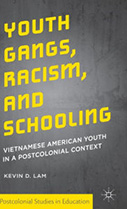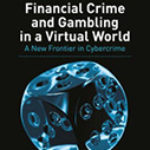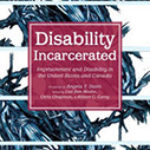YOUTH GANGS, RACISM, AND SCHOOLING: VIETNAMESE YOUTH IN POSTCOLONIAL CONTEXT

Author: Kevin D. Lam
Publisher: New York: Palgrave Macmillan, 2015. 187p.
Reviewer: Phelan Wyrick | January, 2017
Most of the extensive body of criminological research and inquiry on youth gangs and gang members emphasizes the central themes of criminality and deviancy. Kevin Lam, who is not a criminologist, takes a different approach. He examines Vietnamese American gang formation through an exploration of U.S. foreign policy, immigration patterns, critical theories of racism, and the experiences of Asian youth in Southern California during the 1990s. His analysis presents an interesting contextual backdrop for Vietnamese gang activity, but to echo the author’s own words, if you are searching for solutions to the gang problem, this book is not for you.
While many gang studies focus on more proximal factors at the individual, group, family, or community levels, Lam searches further back, and looks more broadly to understand geopolitical and social forces. He presents intimate portraits of three Vietnamese gang members as adolescents interacting with their families, gang-involved and non-gang-involved peers, schools, and the justice system in the 1990s. He seeks to understand how these gang members were influenced by the Vietnam War, subsequent immigration policies and patterns, racialization and racism in the U.S.
Lam traces the far-reaching consequences of destruction in Southeast Asia that climaxed during the US war in Vietnam in 1960s and 1970s, but also included the First Indochina War in the 1940s and hundreds of years of French colonial rule before that. The people, the land, and the spirit of Southeast Asia suffered unmeasurable ecological, physical, and psychological damage over this period. Decades of warfare, followed by the postwar US embargo on trade and economic aid, along with a drought in the 1980s led to a mass exodus of Vietnamese people. Vietnamese refugees came to the US in multiple waves, with the most privileged leaving first under the most protected conditions, and many others in later waves facing dire and dangerous circumstances. US public assistance facilitated the resettlement process and distributed refugees across the country. After initial resettlement, many were attracted to Southern California communities that boasted more opportunities and more visible immigrant communities. In the 1980s and 1990s, a pattern of secondary migration occurred within the US that brought large numbers of Southeast Asians to the Little Saigon area of Orange County, the Los Angeles Chinatown, and the San Gabriel Valley.
Southeast Asians were not the only refugee group that moved into the greater Los Angeles area in the 1980s and 1990s. Central Americans fleeing conflict and natural disasters were also moving into this area in large numbers. Both groups arrived in a region that already had a long history of established gang activity among Mexican -Americans and African-Americans. Racial tensions were already high in Southern California, and relationships between minority communities and the police were already marked by mutual distrust. To make matters worse, both crime rates and levels of public concern about crime and safety were peaking. Elected officials and those running for office at every level were driven in significant part by their efforts to control crime. “Three strikes” laws and similar “tough on crime” policies proliferated throughout the nation. Gangs were a particular concern. There was the accurate assessment that gangs and gang members were responsible for a disproportionate amount of crime and violence. There was also a wide spread moral panic driven in part by the myth of “super predators” among our youth. The super predator myth served to dehumanize gang members and opened the door to particularly harsh treatment by law enforcement. Many gangs aligned along racial or ethnic lines, and law enforcement officials readily adopted racialized portrayals of gangs and gang members to inform their investigations. Lam touches on these contextual factors related to immigration, law, and justice as they were related to Asian populations in Southern California, but the book could and should have gone further to recognize that these forces affected other minority groups as well. These factors add important details for understanding the dangerous waters to be navigated by the children in the families of the Vietnamese refugees who made their way to Southern California.
Lam’s analysis draws on personal interviews with three former gang members, and from media sources and academic literature. The book is also infused with the author’s personal perspective as a “colonized subject” who spent six months in a Hong Kong refugee camp as a young child, and grew up exposed to a variety of gangs on the streets of Southern California. Asian gang members’ perspectives and experiences come into focus through their own words and their constructions of their lives. They relate stories of family, normal adolescent behavior, experiences with racialization, conflicts with Hispanic and other Asian gangs, difficulties in school, and profiling by law enforcement. Their stories stand in contrast to the stereotypical image of Asians as “model minorities” who perform well in school and business and rarely engage in crime. Lam elaborates on the origins of the model minority myth and how it has been used historically in the US to contrast Asians (the “good race”) with African-Americans (the “bad race”). While seemingly positive in its connotations, Lam explains how the model minority myth serves to further marginalize those who do not conform to it, and how it denies the rates of poverty, illiteracy, and dropouts that exist in Asian-American communities.
In presenting the gang members that he interviews, including two males and one female, Lam aims to provide humanizing portraits. They describe childhood and adolescent experiences with friends and family, playing games, and participating in school activities. One tells of the criminality of his father and uncles in the personal way of a child who grew up with it. He describes being a child and seeing jewelry on the table from a heist that they had pulled. Early family experiences like this contribute to him describing himself as being a criminal all of his life. Another describes how her peer group started off as a dance crew, but became drawn into fights and conflicts until they ultimately became a gang. Her account is laced with grief for the loss of a boyfriend in the gang who committed suicide. The third struggled with methamphetamines and incarceration, but has managed to get an associate’s degree, and he describes how he is trying to stay on track.
In this journey through US foreign policy, critical theories of racism, and the experiences of Vietnamese-American gang members, Lam provides an expansive view of the influences on Asian gang activity in the Los Angeles area during the 1990s. The personal accounts, unfortunately limited to only three, help to convey some of the far reaching consequences of a host of distal events and broader social forces. The tensions and challenges in the three personal histories taken together weave a more complex narrative about the multiple ways in which these youth become marginalized and isolated within the gang lifestyle.
Even as Lam indicates that this is not an analysis from the standpoint of criminality or deviancy, it is somewhat disconcerting to see how he treats the topic of gang violence. The book provides no window into the effects of the violence committed by those who are interviewed. Participants were more likely to express regret for friends that were imprisoned for “puttin’ in work,” or “doin’ dirt,” than to show any recognition of the gravity or consequences of the violent acts that precipitated incarceration. A 30 year-old OG (original gangster) describes how he continues to claim his gang affiliation and actively influences 13 and 14 year olds who are currently in the gang. He explains that if he did not continue to claim gang affiliation then “all this work…kill all these people or the ones that died for the Asian Boyz will be for nothing then.” He continues by stating that the violence will never stop, but says he no longer participates personally: “I let the youngsters do it” (p. 101). Lam comments much later in the book that the bad decisions of these gang members cost them dearly, and reports that gang members “did what they felt like they had to do to survive and get rich quickly” (p. 121). The impact of this violence will certainly carry forward to future generations. The rippling effects of loss and trauma will be salient in the lives of many, including those who participated in gang activity and those who did not. Although the three interviews are quite intimate, Lam eschews an examination of proximal or individual factors in favor of examining the far reaching consequences of more macro-level influences.
Applying a “critical, liberationist, decolonizing lens,” Lam too frequently draws on sweeping attributions built on intentionality and conspiratorial design. He emphasizes “the ways in which material conditions and colonial institutions, policies, and practices were created and implemented to impose violence on subjugated and colonized people” (p. 135). He describes how within the US “Asian American subjects are still a necessary racialized labor force (intellectual, manual, and otherwise) within the domestic political economy” (p. 48). For these reasons, Lam states that gangs “impose violence on themselves, since ‘the real enemy’ is much more difficult to locate” (p. 136).
At the same time, Lam fails to address a sizeable body of literature on gang formation. The considerable literature on risk factors drawn from longitudinal research, though admittedly not with this Vietnamese population, would have made a valuable contribution to the analysis. Gang researchers have identified evidence of “pushes” and “pulls” that either propel individuals away from a more typical lifestyle or attract them toward the gang lifestyle. These tend to be much more proximal in the lives of gang members, and have demonstrated greater ability to distinguish among those in the same populations who do go into the gang lifestyle from those who do not. The narratives of the three gang members in Lam’s study are replete with examples of risk factors at the individual, family, community, school, and peer group levels. But the author provides no discussion and demonstrates no interest in why some do and some do not enter the gang lifestyle. Such an analysis of more proximal risk factors and potential protective factors within families, individuals, communities and so on would be fascinating in the context of some of the broader themes that the book highlights. It is possible that such an exploration might have undercut the premise of this book, which appears to be to attribute gang formation and activity primarily to the confluence of racism and US imperialism.
Lam makes a strong case that those interested in social justice must seek to understand the histories of marginalized populations. But the emphasis on American imperialism throughout the book is only marginally helpful and sometimes distracts from understanding the broader range of forces that influence Vietnamese gang formation. Even though Lam does not come to this work from the criminology or public health traditions, his omission of any reference to the work from these fields is a significant shortcoming.
This book is an interesting read as an analysis of historical, social, and cultural factors related to Vietnamese gang activity in Southern California in the 1990s. It, however, provides only limited information relevant to the broader question of gang formation.
Phelan Wyrick, Director, Crime and Crime Prevention Research Division, National Institute of Justice, U.S. Department of Justice


